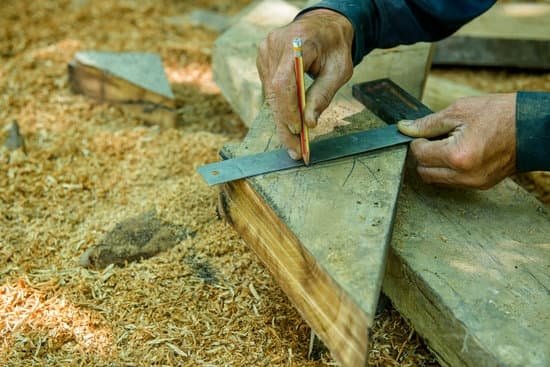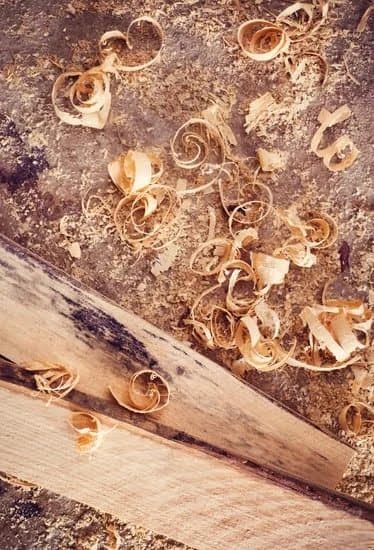What does a joiner do in woodworking? Joinery is an essential aspect of woodworking that involves the construction of wooden joints, connecting different pieces of wood to create sturdy and durable structures. In this article, we will explore the role of joiners in woodworking, the various tools and equipment they use, different types of joints, their importance in furniture making, techniques and methods used, as well as the skills and training required to become a joiner.
Joinery is the art and craft of creating wooden joints by joining together different pieces of wood. This skilled trade has been practiced for centuries, contributing to the creation of furniture, buildings, and various wooden structures. Joiners are responsible for creating strong and reliable joints that can withstand the test of time.
Joiners utilize a wide range of tools and equipment such as chisels, saws, planes, routers, drills, clamps, and measuring devices to accurately cut, shape, and assemble wood. They work with precision and accuracy to ensure that each joint fits perfectly and securely. Different types of joints are used in woodworking such as butt joints, dovetail joints, mortise and tenon joints, tongue and groove joints, among others. Each type serves a specific purpose in joining pieces of wood together.
In furniture making specifically, joiners play a crucial role in constructing high-quality pieces. They are responsible for creating seamless connections between wooden components to produce structurally sound furniture. Achieving precision and accuracy in joinery is essential to ensure that the furniture is not only aesthetically pleasing but also durable and long-lasting.
Tools and Equipment Used by Joiners
Joiners are skilled craftsmen who work with wood to create furniture, cabinets, and other wooden structures through the process of joinery. To carry out their work effectively, joiners use a variety of tools and equipment specifically designed for woodworking. These tools are essential in creating precise and strong joints that can withstand the test of time.
Here are some of the most common tools and equipment used by joiners:
- Chisels: Joiners use chisels to carve out wood and create precise cuts for different types of joints such as dovetail joints, mortise and tenon joints, and finger joints.
- Hand Saws: Joiners rely on hand saws to make accurate cuts in wood, allowing them to achieve the desired shape and size for various components of a piece of furniture.
- Clamps: Clamps are indispensable tools for joiners as they help hold pieces of wood together firmly while glue dries, ensuring that joints are strong and durable.
- Planes: Joiners use planes to smooth out rough surfaces, flatten wood, or create angled edges, contributing to the overall quality and finish of their woodworking projects.
- Drills: Whether hand drills or power drills, these tools are essential for creating holes in wood for dowels, screws, or other fasteners needed in joinery.
In addition to these basic tools, joiners may also use specialized equipment such as routers, biscuit joiners, and jigs to further enhance their precision and efficiency in creating complex woodworking joints. It is crucial for joiners to be well-versed in the proper use and maintenance of these tools in order to produce high-quality woodworking products.
Different Types of Joints in Woodworking
Woodworking involves the use of different types of joints to join pieces of wood together. Joiners play a crucial role in creating these joints, which are essential for the construction of various wooden structures, including furniture, cabinets, and flooring. There are several types of joints used in woodworking, each serving a specific purpose and providing different strengths and aesthetics to the finished piece.
One common type of joint used in woodworking is the butt joint, where two pieces of wood are simply butted together. While this joint is one of the simplest to create, it is also one of the weakest. To strengthen a butt joint, joiners often use reinforcement methods such as dowels or screws.
Another type of joint frequently used by joiners is the dovetail joint, known for its strength and resistance to being pulled apart. This joint consists of pins and tails that interlock with each other when joined together. Dovetail joints are commonly found in high-quality furniture and cabinetry due to their durability and attractive appearance.
The mortise and tenon joint is yet another popular choice in woodworking. This joint involves fitting a projecting peg (the tenon) into a hole (the mortise) to create a strong and durable connection between two pieces of wood.
This type of joint is widely used in furniture making because it provides excellent stability and can withstand heavy loads. What does a joiner do in woodworking Is not only connecting wood but also understanding how different types of joints work for various projects.
| Type of Joint | Strength |
|---|---|
| Butt Joint | Weakest |
| Dovetail Joint | Strong |
| Mortise and Tenon Joint | Excellent Stability |
The Role of Joiners in Furniture Making
Joiners utilize a wide range of tools and equipment to perform their work, including hand tools such as chisels, mallets, and hand saws, as well as power tools like routers, drills, and sanders. These tools allow joiners to accurately measure, cut, shape, and assemble wood components to create intricate joints that are essential for furniture making.
One of the most important aspects of a joiner’s role in furniture making is achieving precision and accuracy in their work. This requires careful attention to detail and the ability to execute complex joinery techniques with skill and expertise. The quality of a joiner’s work directly impacts the overall strength and stability of the furniture they produce, making their contributions invaluable to woodworking projects.
| Joinery Tools | Used For |
|---|---|
| Chisels | Precision carving and shaping |
| Routers | Cutting channels or hollow out an area in wood |
| Mallets | To strike cutting or driving surface |
Precision and Accuracy in Joinery
Joinery is a woodworking technique that requires precision and accuracy in order to create strong and durable connections between wooden pieces. This section will delve into the importance of precision and accuracy in joinery, as well as the techniques and methods used to achieve it.
Importance of Precision and Accuracy
Precision and accuracy are crucial in joinery as they ensure that the joints fit together seamlessly, resulting in a structurally sound and visually appealing finished product. Whether it’s creating mortise and tenon joints, dovetail joints, or any other type of joint, the measurements and cuts need to be precise to achieve a perfect fit. Joiners must pay attention to even the smallest details to ensure that the pieces come together flawlessly.
Techniques for Achieving Precision
Joiners use various techniques to achieve precision in their work. This includes using measuring tools such as tape measures, squares, and calipers to ensure accurate dimensions. Additionally, joiners rely on sharp cutting tools such as chisels, hand planes, and saws to make clean and precise cuts. The use of jigs, templates, and other aids also helps in ensuring that each joint is accurately formed.
Methods for Ensuring Accuracy
In addition to employing proper techniques, joiners must also follow specific methods to guarantee accuracy in their work. This involves careful planning and marking out of joints before any cutting takes place. Furthermore, meticulous attention is given to the assembly process to ensure that all pieces fit snugly together without any gaps or misalignments.
By focusing on precision and accuracy in their craft, joiners are able to produce high-quality woodworking projects that stand the test of time. Their dedication to these principles is what sets their work apart from amateur woodworking endeavors.
Joinery Techniques and Methods
Joinery is an essential part of woodworking that involves joining together pieces of wood to create a strong and durable structure. There are various techniques and methods used by joiners to achieve this, each with its own unique advantages and applications.
Traditional Joinery Techniques
Traditional joinery techniques include dovetail joints, mortise and tenon joints, tongue and groove joints, and half-lap joints. These techniques require precision cutting and fitting to ensure a tight and secure connection between the wood pieces. Dovetail joints, for example, are known for their strength and resistance to pulling forces, making them popular for constructing drawers.
Modern Joinery Methods
In addition to traditional techniques, modern joiners also utilize machinery such as routers, biscuit jointers, and pocket hole jigs to create strong and seamless joints. These tools enable joiners to work more efficiently while maintaining the structural integrity of the woodwork.
Specialized Joinery Methods for Specific Projects
Certain woodworking projects may require specialized joinery methods such as spline joints for picture frames or box joints for building cabinets. Joiners need to have a deep understanding of these specialized methods to meet the specific requirements of each project.
Utilizing these techniques and methods effectively requires meticulous attention to detail, careful measurement, and a thorough understanding of wood properties. This highlights the importance of the role that joiners play in achieving high-quality woodworking projects.
Importance of Joinery in Woodworking Projects
Joinery is an essential aspect of woodworking projects, as it involves the creation of strong and durable joints that hold pieces of wood together. Whether it’s constructing a piece of furniture or building a structure, the role of joinery cannot be overstated. The importance of joinery in woodworking projects can be seen in the following ways:
- Structural Integrity: Joinery ensures that the different components of a woodworking project are securely connected, providing stability and strength to the overall structure. Without proper joinery, the finished product may be weak and susceptible to breakage or collapse.
- Aesthetic Appeal: Well-crafted joints not only contribute to the strength of a woodworking project but also enhance its visual appeal. Joiners pay attention to detail, ensuring that the joints are seamless and blend seamlessly with the rest of the design.
- Longevity: Properly executed joinery techniques contribute to the longevity of woodworking projects. Strong and solid joints help prevent premature wear and tear, ensuring that the finished product lasts for many years.
The skills and expertise of a joiner play a crucial role in determining the success of a woodworking project. Joiners possess specialized knowledge in selecting appropriate joints for specific applications, as well as using precision tools to create these joints. By understanding how different types of joints work and applying their knowledge effectively, joiners contribute significantly to the overall quality and durability of woodworking projects.
In addition to their technical skills, joiners also bring creativity and problem-solving abilities to woodworking projects. They are able to visualize how individual pieces will fit together and troubleshoot any issues that may arise during construction. With their attention to detail and craftsmanship, joiners ensure that each joint is perfectly executed, resulting in a final product that meets functional requirements while also being visually appealing.
Skills and Training Required to Become a Joiner
In conclusion, the role of a joiner in woodworking is crucial to the construction of high-quality and durable furniture and structures. Joiners are skilled craftsmen who are trained to understand the different types of joints, possess precision and accuracy in their work, and have a thorough knowledge of various joinery techniques and methods. The tools and equipment used by joiners are essential for creating strong and seamless connections between wood pieces, resulting in well-crafted finished products.
Joiners play a significant role in furniture making, as they are responsible for creating the foundational framework and ensuring that each joint is secure and stable. Their expertise is vital in achieving the desired aesthetic appeal and functionality of wooden items. Moreover, joinery is an important aspect of woodworking projects, as it determines the overall quality and longevity of the finished product.
To become a joiner, individuals must undergo extensive training to acquire the necessary skills and knowledge required for this specialized profession. They must also develop a keen eye for detail, patience, and a passion for working with wood. Additionally, possessing an understanding of different types of wood properties will contribute to their success as joiners. Overall, becoming a joiner requires dedication, practice, and continuous learning to excel in this field.
Frequently Asked Questions
Do You Really Need a Jointer?
Whether or not you need a jointer depends on the type of woodworking projects you undertake. If you work with rough lumber and need to create flat, smooth surfaces for joining pieces together, then a jointer can be an essential tool in your workshop.
However, if your projects mainly involve working with pre-surfaced wood, then a jointer may not be necessary for your specific needs.
What Is the Best Use of a Jointer?
The best use of a jointer is to create flat, smooth surfaces on pieces of rough lumber. By using a jointer, woodworkers can flatten one face of a board and square up one edge, making it easier to join the boards together and ensuring the resulting project has straight edges and even surfaces.
What Does a Jointer Do in Woodworking?
In woodworking, a jointer is used to straighten and flatten the surface of rough lumber. It works by removing small amounts of material from the surface of the wood using sharp rotating blades. This creates a flat reference surface that can then be used as a starting point for accurately dimensioning the wood or joining pieces together.
Additionally, it also allows woodworkers to create square edges on boards for joinery purposes. Overall, a jointer is an important tool in achieving precise and high-quality woodworking results.

Hi everyone! I’m a woodworker and blogger, and this is my woodworking blog. In my blog, I share tips and tricks for woodworkers of all skill levels, as well as project ideas that you can try yourself.





